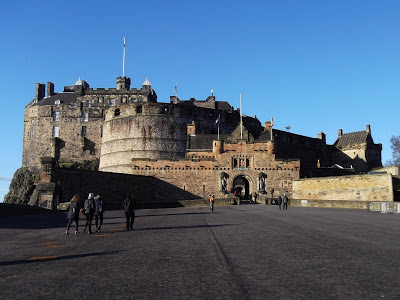 |
| Current Humbrol Acrylics |
In the days before Humbrol introduced their Military series
of enamels – with specific Napoleonic colours and everything – I tried all sorts
of ploys to find shades of paint that were otherwise unobtainable. I had an
expert acquaintance who used to tell me that I should use artists’ tube colours,
and mix my own – the implication being that only a prat would do anything else.
[See details of Foy’s Tenth Law for a discussion of this kind of advice.]
I would fix him with the closest thing to a sardonic glance
I could muster without a rehearsal, and say something profound, like “wuff
wuff”. Apart from the hassle and the mess, the chances of ever getting the same
shade twice – maybe even once – convinced this particular prat that a
ready-made pot of the shade you actually want takes some beating.
In the pursuit of this, I discovered Humbrol’s very
extensive Railway Authentics, which were really useful. I must have a great
many patches of colour in my Napoleonic armies today which come from the world
of model railways, though the original pots solidified and were ditched decades
ago. I recall that for a long time you could not get a decent orange or crimson
shade in the standard Humbrol ranges, so I had a pot of an orange paint
intended for painting the coachwork lining on railway carriages (company and
date unknown), and to this day the pennons of the Vistula Lancers show a deep
crimson which started life as LMS Maroon.
One slight issue with the railway colours was that the
authenticity extended to the degree of gloss, and they expected you to know
what was what. LMS Maroon, for example, was a semi-gloss. At first I used to
add Humbrol’s flatting agent to quieten down the shine, but I realised pretty
quickly that leaving the paint as it was and applying matt varnish over the top
was the way to go. For reasons I cannot remember, I started very early to use
Cryla Acrylic matt medium as a glaze, and I am still delighted with it. Forty
years down the line, it is as clear and pure as when it went on, which is very
much preferable to the subsequent yellowing and crystallization of the
solvent-based varnishes I used from time to time. Humbrol’s clear varnish of
the day was not a long-term answer to any question at all.
Yesterday I was travelling about a bit, and took the
opportunity to visit a branch of a large chain of wargaming model shops, which
happens to sell Citadel paints. Not my most comfortable environment, but I
thought I’d risk it. First problem was the paint rack – they had both the old
and the new names on display, and the stuff was not well enough sorted for me
to find my way around it. I was going to ask for some clarification of what the
“layer” paints were, so I hovered near the check out for a while.
The young man at the checkout was deep in conversation on
his smartphone, enthusing about an army of Darklings[?] a colleague was
preparing. That’s right – you guessed correctly – they were awesome. After some
five minutes of this, I remembered my new theory that somehow the special lighting
in these particular shops does not reflect normally from me, and the young man
would not be able to see me. I also realised how humbling it would be to have
to ask for an explanation of white paint, so I left quietly, wondering if the
CCTV could see me.
I subsequently visited a very large, independent model shop in
the same city which sells everything you could think of, apart from Citadel
paints. The staff in this shop can see me perfectly, and they are always very
focused on the possibility of someone pinching a radio-controlled aircraft or a dolls' house and
walking off with it. Anyway, I found the rack of Humbrol railway paints, which
are now acrylic, of course, and which still offer an interesting range of
unusual shades. I got some plain matt white, and something called RC417 (RC = Rail
Colour), which was described on the rack (though not the pot) as “off-white for
carriage roofs”. Could be just the thing for ECW stockings and suchlike.
A humble purchase, but I was pleased to renew my
acquaintance with railway paints. Really quite nostalgic.

























